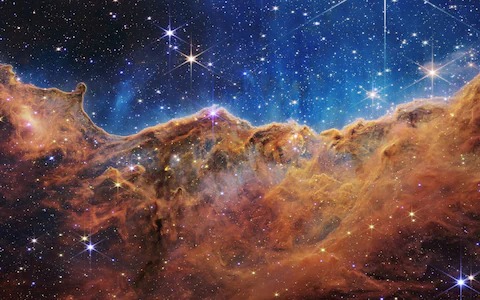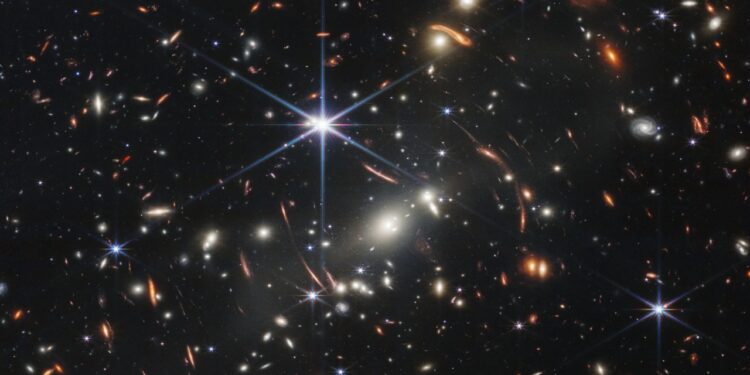Agencies – Gaza post
James Webb telescope will see the universe’s first stars
The first image from the James Webb Space Telescope, showing what is believed to be the ‘deepest’ picture of the cosmos to date.
on July 11, President Biden released the first picture from the (JWST) and since then there has been a torrent of data and images from the $10 billion piece of equipment.
Infrared instruments onboard the world’s marquee observatory is peering further back into space than ever before and trying to spot the light on the “dark ages” of the universe.
A team of experts has published an image of a galaxy which claimed that its existed only 300 million years after the universe’s inception, nearly dating back 13.5 billion years.
Prof Chris Conselice believes that Webb will improve more. the team is working on Webb and already published two papers, with another due out on Monday.
Prof Conselice said he thinks stars as ancient as 13.75 billion years old could be captured by the power of Webb.

He said, “If that galaxy shown to be 300 million years old is true so big galaxies had already formed,”
In the very infancy of the universe, there is a criterion must be before stars can form. for beginning, the scattered gas from the big bang must be cool to a star-forming temperature. next, the chaotic gaseous debris needs to aggregate and become denser.
Both of these processes take time, but how long remains a mystery. It is one Prof Conselice hopes Webb can also help shed some light on. These basic processes take time.
‘Huge, short-lived stellar beasts’ themes of a first star
He said the first stars that exists would be huge, short-lived stellar beasts that burnt hot and bright only for a short time before it explodes violently.
Prof Conselice has been working on James Webb for around 20 years since his days. He hopes will reduce, or eradicate, the “dark ages” which lie beyond the scope of Hubble, the long-serving telescope which has been considered as the world’s most powerful telescope by Webb.
He at last added “a lot of things we don’t know about galaxies, even from the halfway point of the universe backwards.”






















